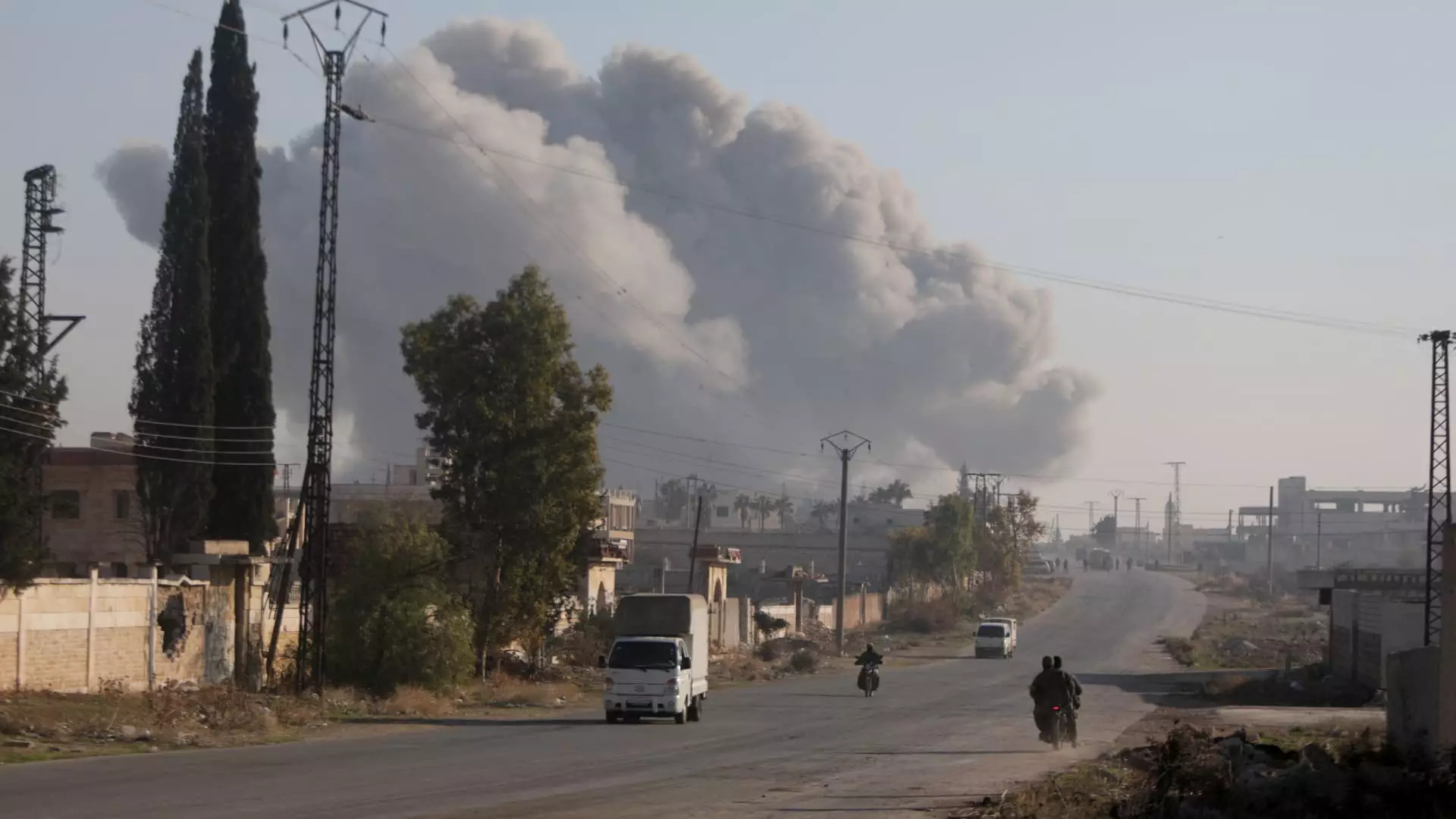The city of Aleppo, once the scene of intense combat and strategic significance in Syria’s protracted civil war, found itself at the center of renewed hostilities on a tumultuous Friday that marked the first substantial clashes since 2016. An alliance of insurgent forces launched an unanticipated offensive against the city, pushing through surrounding villages and towns in northwestern Syria. Witness accounts describe a city suddenly engulfed in chaos, with civilians fleeing as rockets and gunfire erupted. This resurgence of violence not only unsettles a region already fraught with conflict but also underscores the volatility of the situation in Syria as it grapples with multiple layers of warfare involving both local and international players.
The latest offensive seems to have coincided with a broader context of military distractions among Iran and its allies, who have been preoccupied with domestic conflict against the backdrop of their ongoing involvement in Syria. Hezbollah, one of the key supporters of the Syrian regime, redirected its focus during its recent confrontations with Israel, providing the insurgents the opportunity to exploit vulnerabilities within the Syrian government’s defenses. Robert Ford, the last U.S. ambassador to Syria, noted the indications of fragility within Syrian governmental structures as they face simultaneous pressures from opposing forces. This assault, characterized by an impressive mobilization of fighters under the banner of Hayat Tahrir al-Sham (HTS), represents a possible turning point where government troops are described as retreating in the face of organized opposition attacks.
The escalation in Aleppo comes at a time when the region is witnessing increased violence elsewhere, notably in Gaza and Lebanon, revealing a nexus of interconnected crises. The situation intensifies as it indicates the complex interplay of regional powers, including Russian and Turkish involvement, that have historically sought to mediate the Syrian conflict. Despite earlier agreements aimed at maintaining a ceasefire and establishing boundaries for conflict zones, evidence suggests that these accords are fraying under the weight of renewed aggression and territorial claims. Turkish involvement, while aimed at supporting opposition forces, has failed to prevent the Syrian government’s military initiatives in areas of contention, complicating the quest for stability.
The immediate consequences of this renewed fighting can be seen in the increased casualties and the shifting tactical landscape in the area. Both insurgents and government forces reportedly suffered significant losses, and the toll on civilians remains painfully evident. The Syrian Observatory for Human Rights documented numerous fatalities, including innocent bystanders caught in the crossfire. Reports emerged that insurgents targeted civilian infrastructure, leading to casualties among university students and provoking widespread fear within the population. Such tactics invoke a return to the brutal strategies employed during previous phases of the war, reflecting a desperation born of a protracted struggle for dominance.
In response to the latest developments, reactions from the international community have been mixed, underscoring the complexities of foreign involvement in the Syrian conflict. Russia, a critical backer of the Assad regime, has condemned the breach of sovereignty, reaffirming its commitment to restoring constitutional order. Nevertheless, the effectiveness of Russian military support could be called into question as critics highlight the regime’s failure to maintain control amidst the onslaught. Additionally, Iran’s Deputy Foreign Minister accused external powers of orchestrating these insurgent attacks, attempting to rally further support for the Syrian government’s position.
Another noteworthy aspect of this resurgence in violence is the apparent use of drones by insurgent forces. The utilization of this technology introduces a modern dimension to the ongoing conflict and alters traditional combat strategies employed in the region. As insurgents showcased their capabilities through videos posted on social media, the implications for future engagements are evident; the battlefield dynamics are continually evolving. The newly acquired weaponry and tactics might embolden these groups while challenging the remaining conventional forces still loyal to the Assad regime.
As Aleppo’s situation continues to unfold, the uncertainty shrouding the future remains tangible. With countless lives at stake and the region’s geopolitical fabric hanging in the balance, stakeholders must reconsider their approaches to diplomacy and conflict resolution. The latest offensive not only highlights the deeply entrenched divisions within Syria but also reflects the broader patterns of instability that persist in the Middle East. Unless proactive measures are taken, the cycle of violence seems poised to continue, bringing further human suffering and geopolitical repercussions for years to come.


Leave a Reply